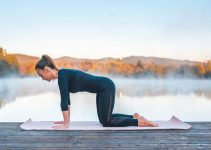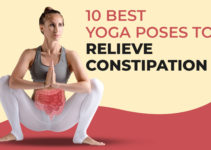- What Yoga Does?
- Poses for Blood Circulation
- Mountain Pose
- Thunderbolt Pose
- Shoulder stand
- Camel Pose
- Plow Pose
- Uttanasana
- Savasana
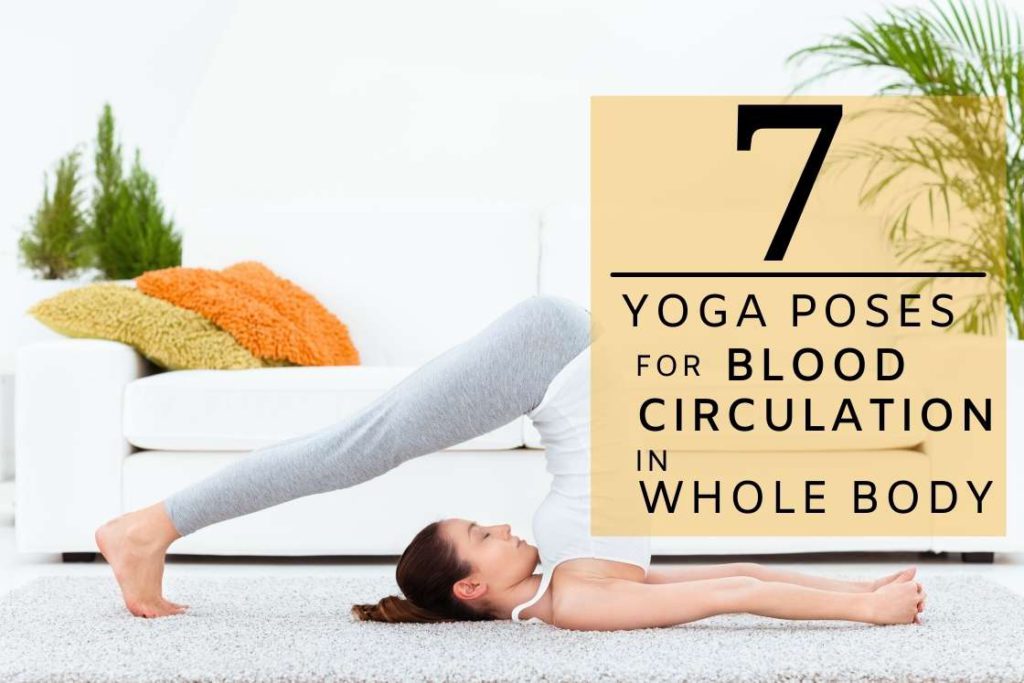
The understanding of blood circulation is very important. Our body, every muscle, bone, and organ, hosts within them a wide range of chemical interactions. These chemical interactions make way for different biological processes of our body.
Now for these chemical interactions, the resources required are oxygen and nutrients. The digestive system acquires the needed nutrients from the food we consume. And the lungs account for the oxygen from the air we inhale.
The responsibility of carrying these nutrients and oxygen to other body parts falls on the circulatory system. Thankfully, this process of blood circulation can be kept in balance with proper diet and exercise.
What yoga does to improve blood circulation?
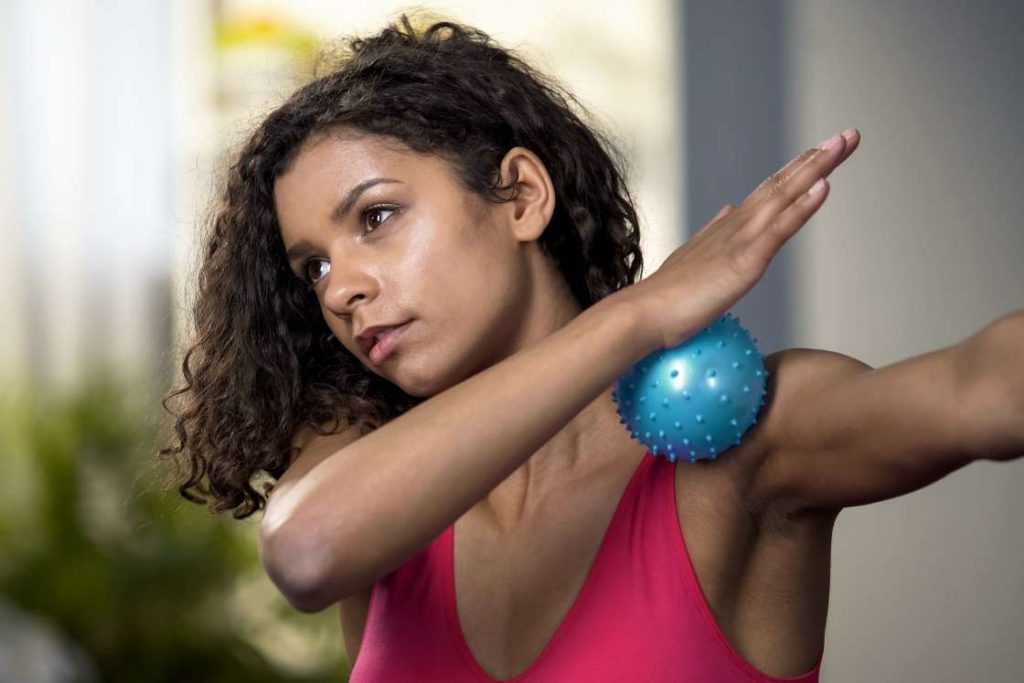
An inactive lifestyle leads to poor blood circulation. The practice of yoga involves physical postures, stretching that build systematic pressure gateways in your body, improves blood circulation. Additionally, these postures encourage rest too, which is critical to your circulatory system.
Your blood circulation depends on a number of factors, including your heart health, lung health, arteries, veins, and lymphatic health.
In the below points, we will see how yoga practices can help you address all these areas which results in improving blood circulation.
1. Yoga helps your heart pump better
The first and primary component of your circulatory system that yoga benefits is your heart. Your heart does the basic pumping for your circulatory system.
A Harvard Health reports shows yoga helps you develop your heart muscles, which contract and expand to form the pump. Further, yoga stimulates your heart nerves for signals that trigger the pumping for good circulation.
2. Yoga helps your lung oxygenate
Your lungs are responsible for sucking out the carbon dioxide from your blood and enriching it with oxygen. Yoga poses can train your nervous system and brain for a better Autonomic nervous function, which helps your lung function involuntarily.
Certain stretches of yoga can increase the performance of the muscles around your lungs, your diaphragm, and the muscles between your ribs. These muscles collectively help you inhale and exhale.
3. Yogic practices can help clear arteries
The blood flow happens through your blood vessels. The oxygenated blood flows to your body parts through the arteries, and the deoxygenated blood flows back from your body parts to your heart through your veins.
Yoga exercises can help you keep reduce body fat, an excess amount of which, can increase pressure on the arteries obstructing the flow on them. Further, yoga can also help you prevent the deposit of cholesterol within arteries, which leads to better blood flow.
4. Boost blood circulation in veins
Your veins are responsible for bringing back the impure blood to your heart. The blood flows backward in your veins through the suction pull created as the heart expands. However, in the veins further from your heart, the force of gravity resists this pull.
This is where yoga comes into play. Yoga activates the muscles around your veins, to establish a pressure that regulates the blood circulation in your veins. The pose holds used in yoga, can enhance the functioning of valves in the veins, the valves that prevent the blood from flowing in the wrong direction.
5. A better blood cleansing by the lymphatic system
Your body organs channel out their waste materials into your blood. Your lymphatic system is entrusted with the responsibility of cleansing these impurities. When your lymphatic system fails to perform appropriately, impurities build up and your blood loses its flow.
Unlike your blood flow, your lymphatic system doesn’t have any specific organ to trigger its operation. It relies solely on your muscles. It’s the contraction and expansion of your muscles that make your lymphatic system work. Thus, yoga keeps your muscles well trained for a great range of motions, that eventually add to the cleansing of your blood.
6. Keep other diseases in check
Finally, yoga can help you with other cardiovascular diseases, respiratory disorders, and immunity disorders, that can lead to poor blood circulation. Blood circulation can even result from conditions like bowel disorders, digestive disorders, high blood sugar, and stress. All these conditions are effectively managed with systematic yoga practices.
Yoga Poses to Improve Blood Circulation in Whole Body
Different yoga poses will address different elements of the circulatory system. All these poses collectively will help you achieve the right balance in your circulation. While some poses will generate rest to your body, some will develop better muscle functioning. While some poses will make your heart healthy, some will make your lung efficient.
Try these 6 yoga poses to improve blood circulation.
1. Mountain pose – Tadasana
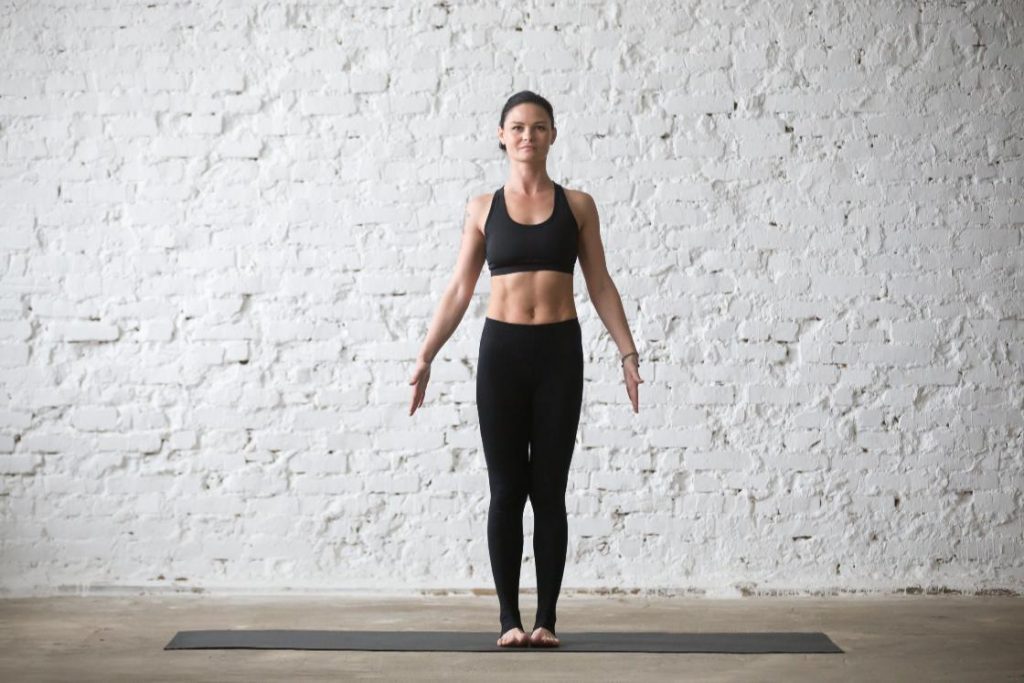
The mountain pose is one of the easiest poses to perform, yet one of the best poses for blood circulation in the whole body. In this pose, you hold your body in the ideal erect standing posture. It will open up all your arteries, and increase the blood flow in them. This pose will also train the valves in your veins for better functioning.
- Stand straight with your legs hip length apart.
- Keep your spine erect.
- Keep your back of the head, shoulder blades and buttocks in the same line.
- Push your chest slightly out, and look in front.
- Keep your hands straight by the sides of your body
- Palms open and facing front.
- Breathe steadily, and hold the pose for 30 seconds to a minute.
While holding this pose, you need to be consciously aware of your balance and keep your posture erect. Your muscles however, must not be stiff. Stiff muscles will obstruct the blood flow.
2. Thunderbolt Pose – Vajrasana
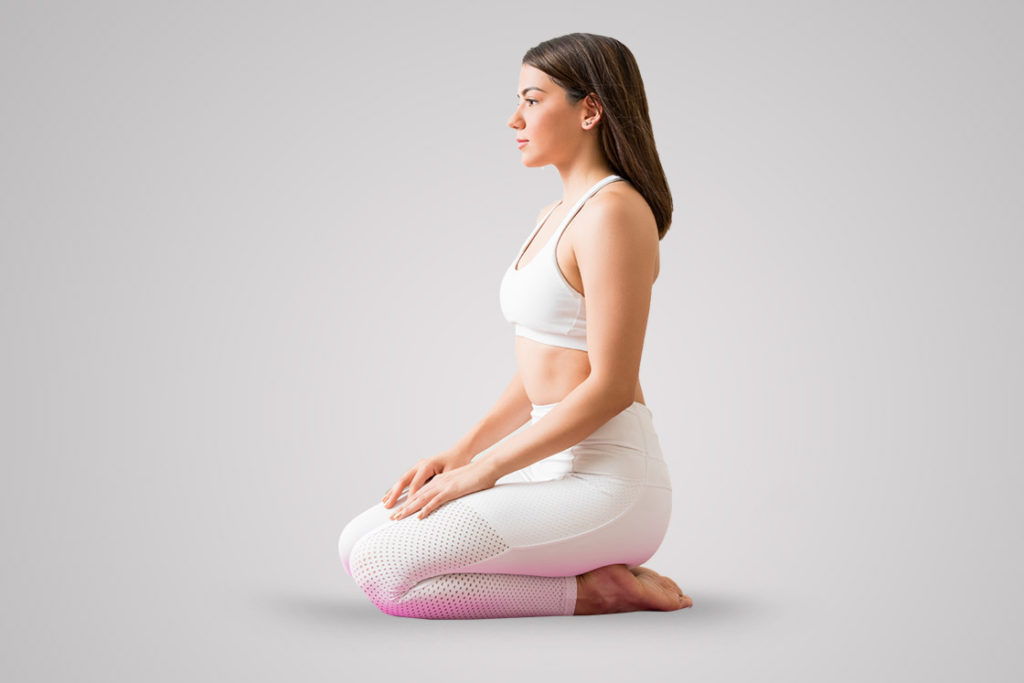
Vajrasana helps you clean your blood of impurities, and enhance the flow. This pose creates muscle pressure in your legs and lower abdomen. This pressure activates the surrounding veins and lymphatic systems, both of which collectively act in cleaning the blood impurities
- Kneel on your knees.
- Stretch your toes outward, with the top of your feet touching the ground.
- Lean forward and sit back on your heels.
- Let your heel rest outward as they carry your sitting bones.
- Extend your hands straight Infront, and rest them on your knees.
- Breathe steadily and hold the pose for 30 seconds to a minute. Gradually you can increase upto 3-5 minutes
Use a rolled blanket or yoga block, in between your feet and sit on it, instead of your heels. This will protect your knee and ankle joint from injury. However, if you are light weight and comfortable in sitting on your heels, do not opt for the support.
3. Shoulder stand – Sarvangasana
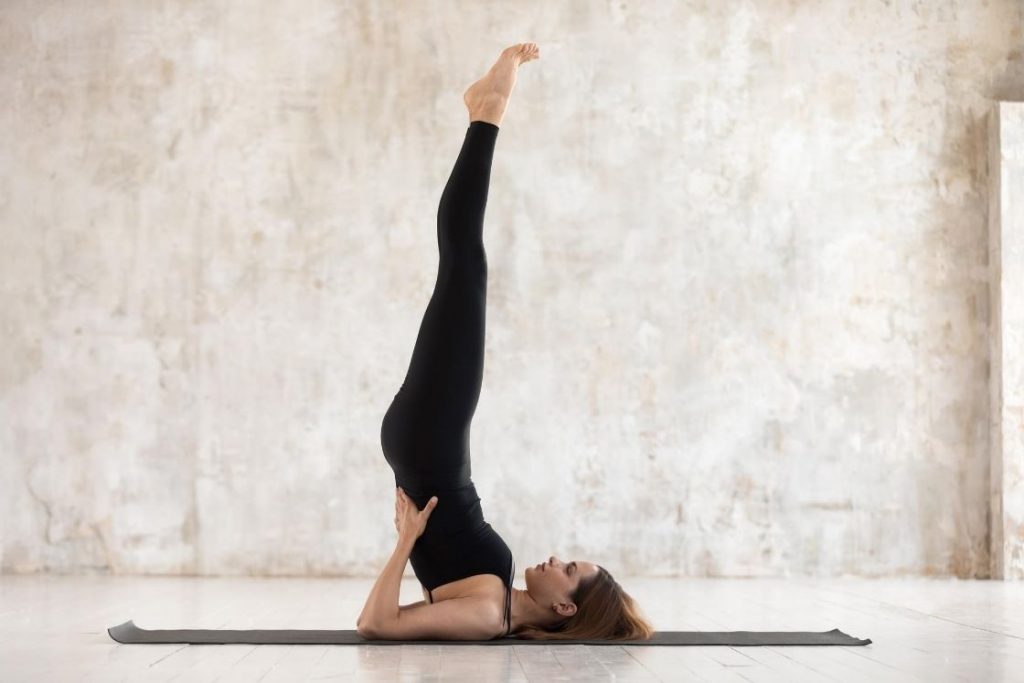
Shoulder stand or any inversion pose for that matter, are excellent for your veins. Lack of activity and lack of muscle pressure can often lead to dull movement in your veins. This disrupts the balance between the inflow and outflow of blood in your heart. Shoulder stand pose, with the help of gravity, naturally establishes a flow of blood from your legs to your heart and brain.
- Lie supine on your back
- Bend your knees and lift up your legs over your body.
- Support your torso with your hands to hold your body; rest your elbows on the ground.
- Gradually push your torso with your hands and push up with your feet, and lift up your entire body for an inverted stand.
- Balance your body on your shoulders.
- Your chest should push against your chin.
- Look down towards your heart.
- Hold your pose for 30 seconds. You can gradually increase, but do not go over 5 minutes
You can also try the assisted version of shoulder stand pose for better circulation. Initially inversion poses can be a challenge, especially due to the balance and core strength factor. You can partner up with someone, who would hold your legs, as you balance. Your partner can even help you rise up on your shoulders.
4. Camel Pose – Ustrasana
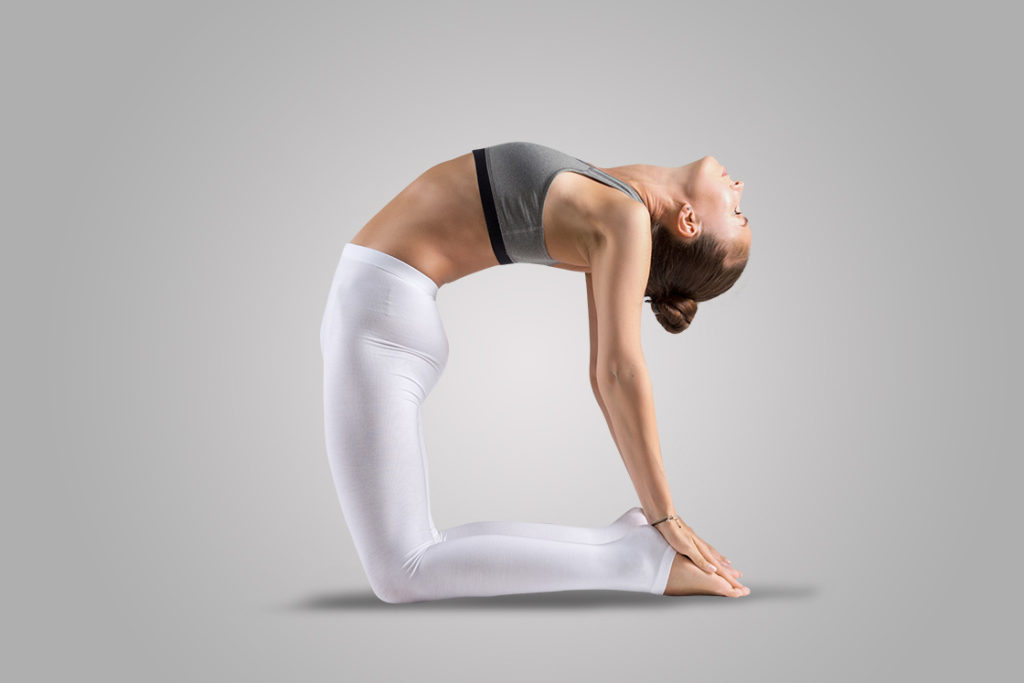
Camel pose stretches your spine for healthy nervous activity. Practicing this pose will stimulate the nerves in your heart for transmitting signals, that result in the pumping movement of the muscles. Further, this pose can also stimulate the autonomic nervous functions in your brain, which help in the oxygenation of blood by your lungs.
- From Vajrasana, get up to the kneeling position.
- Take a few breaths and massage your hip.
- Place your hands right below your hips.
- Gently push forward your spine for a backward arch.
- Gently rock your spine back and forth for warmth.
- And then in one clean, steady, and slow motion, push your spine forward, and fetch the maximum possible arch.
- Put your abs, shoulders, and chest muscles into extending the arch.
- Gradually arch back to a point, where you can hold your heels with your hands.
- Arch your head back and breathe steadily.
- Hold the pose for 5-10 breaths
Our spines aren’t used to stretching backward. Hence, the final pose can have a bit of a flexibility challenge. If so, you can do the warm up stretches for a few days, and then gradually settle for the final pose
5. Plow Pose – Halasana
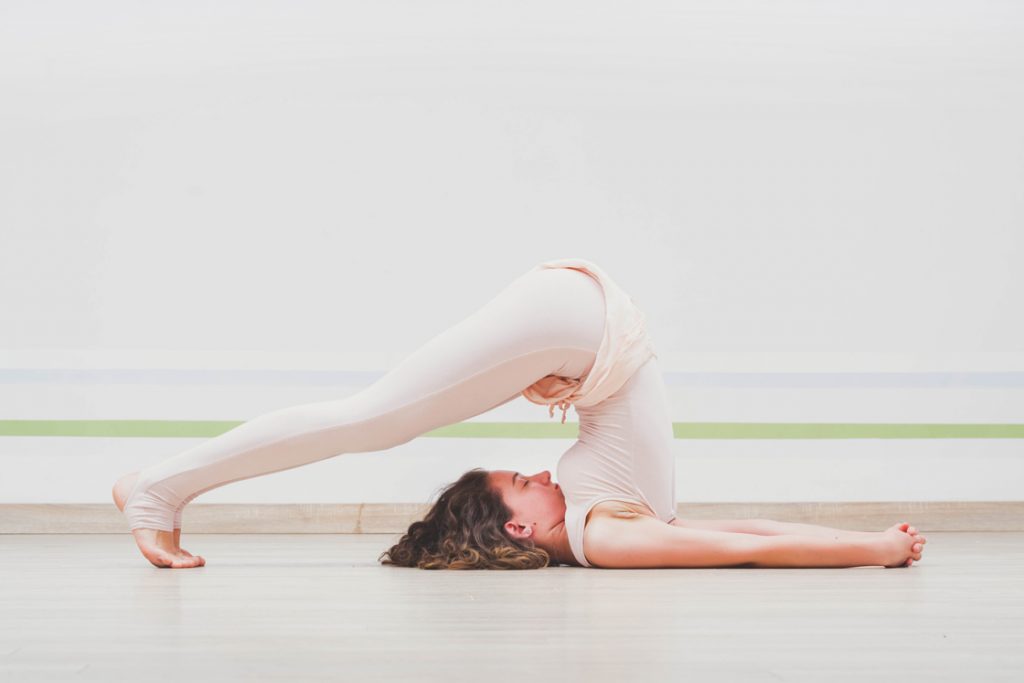
Plow pose is a pose perfect for your lymphatic system and blood vessels. The plow pose creates pressure gateways in all the important areas of your body. These pressure gateways help your arteries and veins maintain even pressure at regular intervals throughout your body. This pose can also improve the fluid flow in the lymphatic networks in your groin, abdomen, neck, chest, and armpits.
- Get into shoulder stand and hold the pose for a few seconds. About 5-10 should be fine.
- Now use the hand support, abs and lower back strength and thigh muscles, to bend your legs from your hips and bring them down over your head.
- Let your torso fall down a bit, to make the bend from your hips easier.
- Keep your legs straight and joined.
- Now try to touch the ground over your head with your toes.
- Once you have reached maximum bend at your hips, push up your torso with your hands and put it back up on your shoulders..
- Keep looking down to your heart.
- Take 5 breaths and gradually release
Like the shoulder stand you also use an assist for the plow pose. Here your assist would also help you bring down legs and touch the ground. For the hold however, you must be On your own.
6. Standing forward bend – Uttanasana
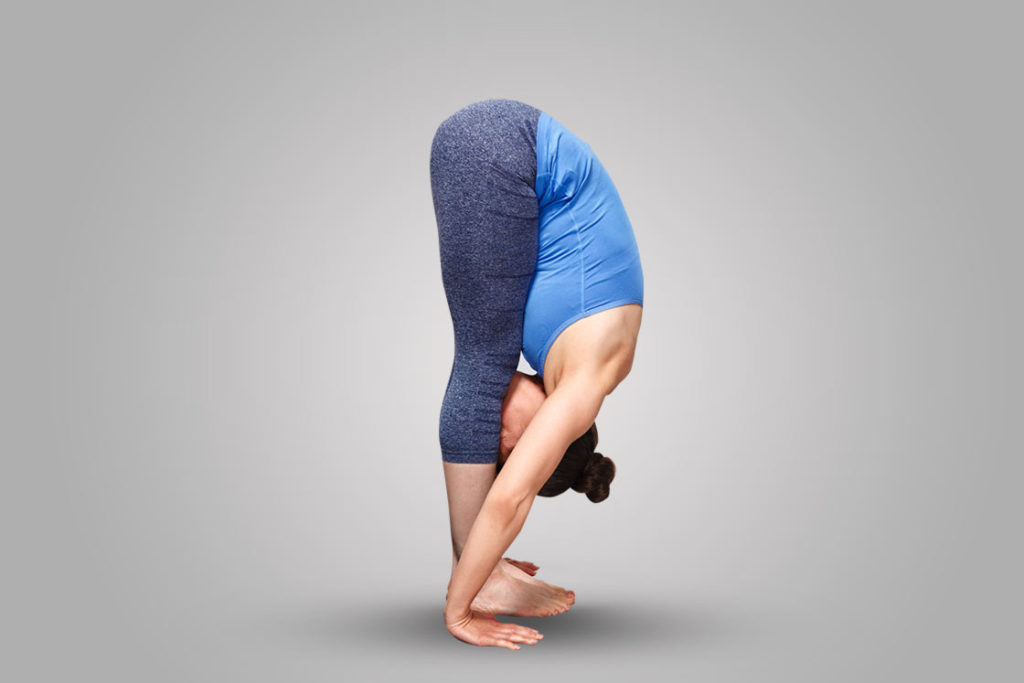
Our lower abdomen and groin area, is the second most important area of blood flow, right after the chest region. Alongwith many organs and glands, this area as a complex network of arteries, veins, lymph nodes and lymph vessels. The standing forward bend gives maximum exercise to this area; consequently improving the blood circulation.
- Stand straight with your legs hip length apart
- Raise your hands straight over your head.
- Bend your body from your groin, and not your abdomen, and bring your body downwards toward your knee.
- Do not bend your knee, which is very important to remember and follow.
- Pull your bend to a point, where you can touch your knees with your nose, and your feet with your hands.
- Hold the pose for 10 breaths. You can practice 3 repetitions of this pose.
Remember, touching your feet is not the main goal of your pose, but bending without breaking your knees is. And do not force yourself to stretch, as it can hurt your knees. At any point if your feel pain inside your kneecaps or at the sides of it, you must stop stretching; it means you are hurting the ligaments
7. Corpse Pose – Savasana
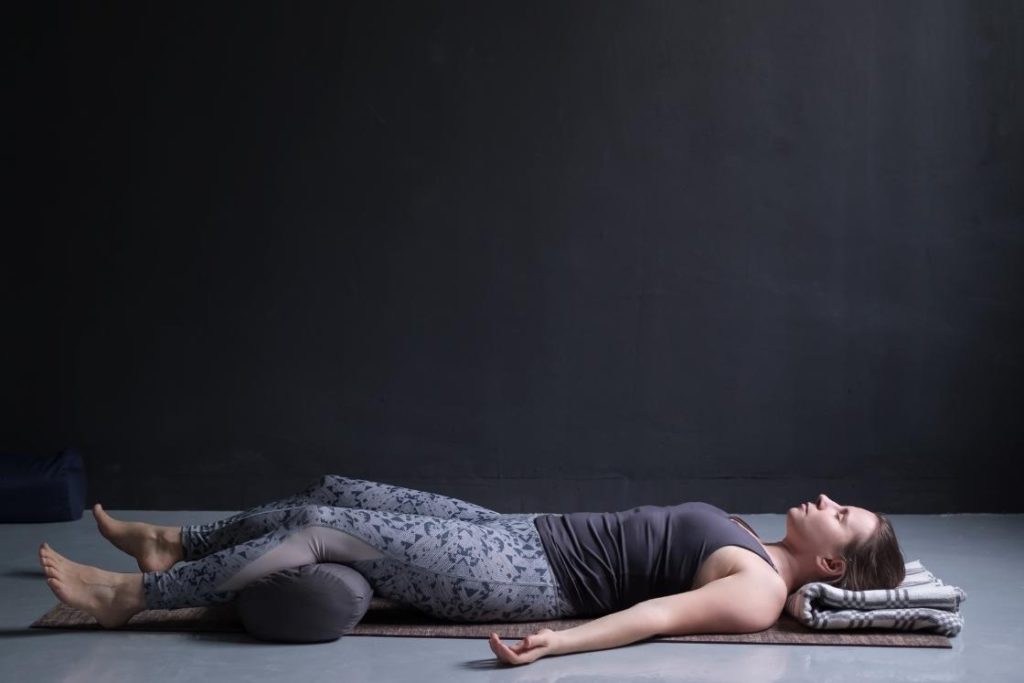
Savasana is the yoga of rest; for both body and mind. A stressed-out mind will have dampened nervous functions, which in turn, will dampen the nerves controlling the circulatory organs. And stressed-out muscles will fail to provide the pressure required by the veins and lymphatic vessels. Savasana is the ideal pose to bring harmony and calm to all your elements.
- Peacefully lie down on your back
- Stretch out your arms and legs
- Close your eyes
- Breathe steadily
- Focus on each area, and each muscle of your body.
- Breathe by focusing on a particular area and then consciously relax that area of your body.
- One by relax all your muscles.
- You can stay in this pose for as long as 30 minutes.
The challenge here is totally on your mind. You will need no assist. What you will need here is time, and a lot of it. The mastery of this pose however will largely help you boost your mental abilities.
Conclusion
Always be conscious about your breathing. And to be safe before starting any pose, practice a few rounds of conscious breathing. This will help you generate a lot of oxygenated blood, and nourish your muscles and body parts with nutrients. With the oxygen and nutrients boost, your body will perform the poses better, and with lesser chances of injury.
Finally, note that as good as the supported version of each poses are, you still need to aspire for the regular version. The muscle movements and mental awareness involved in the regular poses, in reality, will complete the poses.

